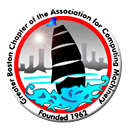Aspect Oriented Programming for Java
Aspect-oriented programming (AOP) allows developers to create clearer, cleaner, and more flexible software. AOP makes it possible to centralize code in a single class that typically would be spread across many classes when implementing features such as logging, standards enforcement, security, and testing. This difference allows increased productivity, and results in more flexible and higher quality software.
AspectJ provides a seamless aspect-oriented extension to the Java programming language, including a compiler and support for popular IDE's and other Java development tools. Aspect programs run on standard Java VM's.
Prerequisites: Java and OO design principles.
Read more about AspectJ and download software
Programmer's guide
Aspect-oriented programming overview
When to use AOP
How to apply AOP to new and existing systems
AOP examples
Development environment integration
How to introduce AOP into your projects
Advanced Registration Price: $80.00 Good until Monday, 11/11/2002
Regular Price: $90.00
Gregor Kiczales is a principal Scientist at the Palo Alto Research Center and the lead designer of the AspectJ language. He has more than 15 years of experience in designing, implementing and bringing new programming language technologies to market. He was a member of the CLOS design team and the lead designer of the CLOS metaobject protocol.
Ron Bodkin is the founder of New Aspects, which applies AspectJ to enterprise applications. Ron has worked for Xerox PARC and led the delivery of the first projects to train and apply AspectJ technology for customer projects. Ron was previously a founder and the CTO of C-bridge, which helped enterprises change business processes to take advantage of e-Business.
MIT is at 77 Massachusetts Avenue, just on the north side of Memorial Drive(on the north shore of the Charles River), in Cambridge, MA.
Map showing the MIT campus. The red building is Bldg. 34; the Kendall T-Station is on Main Street off the right side of the map.
Building 34 is located on Vassar Street about half way between Main Street and Massachusetts Ave. It is a small square building turned 45 degrees to the street so it may look like a diamond, especially with a glass atrium entrance. Building 34 is set back a few yards from the street and the line of other buildings. It is between buildings 36 and 38.
Parking: Vassar Street on the other side of Mass Ave has a parking lot, a garage, and plenty of spaces on the street. MIT West Annex Lot and West Garage
